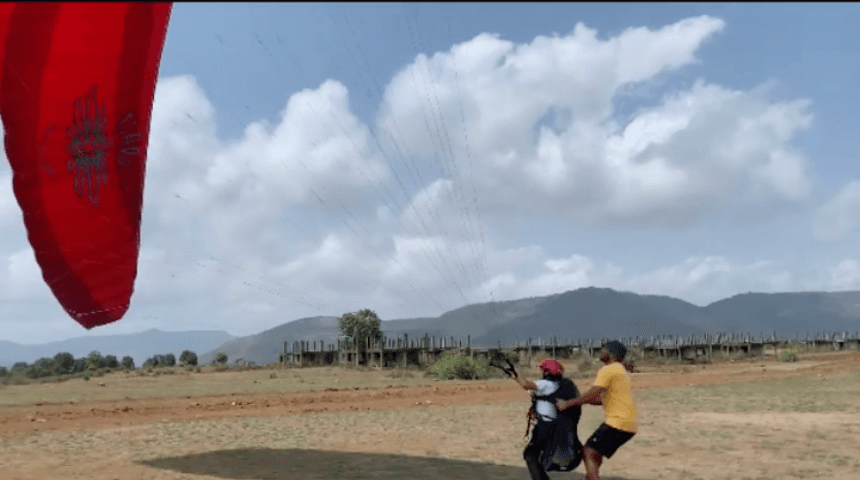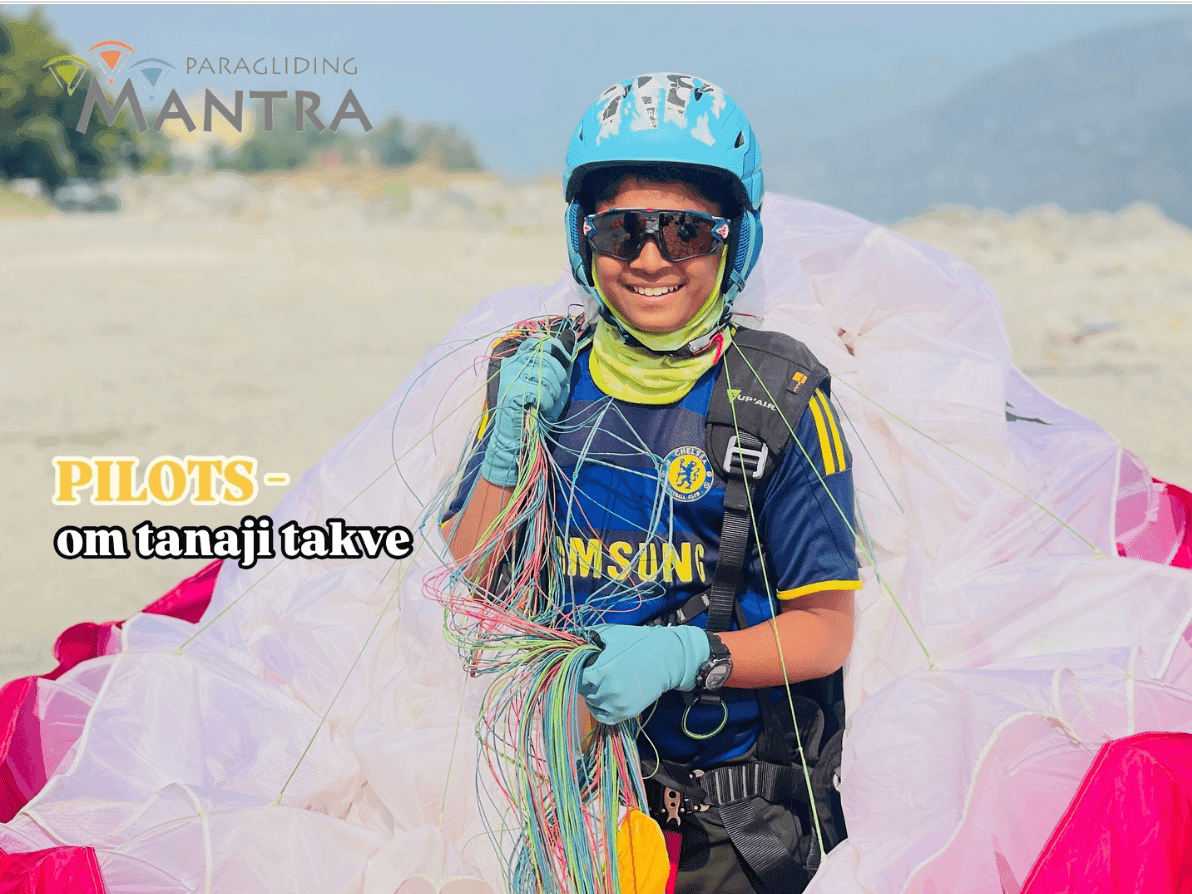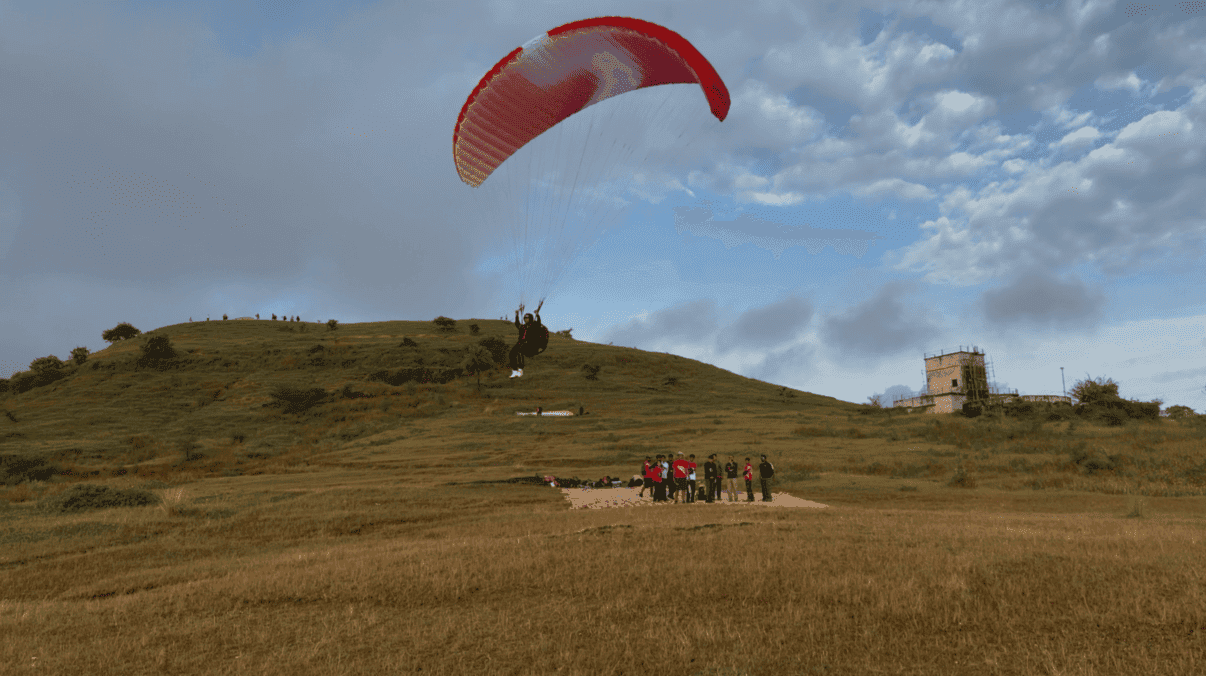
Admin
India’s Youngest Paragliding Pilot
Discover the inspiring journey of India youngest paragliding pilot. A true story of passion, discipline, mentorship, APPI-certified training, and the skies of Kamshet shaping the next generation of aviators.

From ground-handling drills to his first supervised solo glide — follow the inspiring journey of a young trainee shaping the future of Indian freeflight.
Published · Paragliding Mantra
At the sun-kissed training hills of Kamshet, Maharashtra—one of Asia's premier paragliding destinations—a remarkable story has been unfolding. India's youngest paragliding pilot began his journey in 2022, and what makes his story extraordinary isn't just his age, but his unwavering dedication, disciplined approach, and the profound family legacy that shapes every flight.
Watching his father, Tanaji Takve—a renowned acro pilot and APPI-certified instructor—guide students through their first flights and execute breathtaking aerobatic maneuvers sparked something irreversible. What began as wide-eyed curiosity at the launch site evolved into a structured training regimen: countless hours of ground-handling sessions, comprehensive theoretical study covering meteorology and flight dynamics, and meticulously supervised flights that methodically built both technical skill and situational awareness.
From the very first moment he donned a helmet and harness, his interest transcended typical childhood fascination. This wasn't fleeting excitement—it was the beginning of a calling. Family support has been the cornerstone of this extraordinary journey: steady encouragement from his father who balanced mentorship with professional rigor, patient technical guidance from a team of experienced instructors, and an entire community of pilots who rallied behind this young aviator.
Growing up surrounded by paragliding culture—watching pre-flight checks, absorbing safety briefings, understanding weather patterns—gave him an unusually mature perspective on aviation. This immersive environment, combined with formal structured training, has cultivated an approach to flight that prioritizes understanding over adrenaline, patience over shortcuts, and respect for the air over recklessness.
At Paragliding Mantra, safety isn't a checkbox—it's the foundation of every lesson. Training begins firmly on solid ground, where aspiring pilots spend weeks mastering fundamental skills that will one day keep them safe at altitude. This includes comprehensive wing control exercises in varying wind conditions, proper harness handling and body positioning, repeated takeoff and landing drills until muscle memory takes over, emergency procedure practice, and thorough understanding of equipment maintenance and pre-flight inspections.
Only after demonstrating consistent, repeatable competence across all ground school modules does a trainee progress to their first tandem flight experience, followed eventually by supervised solo flights with constant radio communication. Every session involves professional-grade equipment: certified helmets, APPI-approved training wings designed for stability and forgiveness, modern harnesses with proper back protection, two-way radio systems for real-time instructor guidance, and regular equipment inspections performed by certified technicians.
Instructor's Reflection
"When I see him handle the wing with such respect and focus, I'm reminded that flying isn't about conquering the sky—it's about becoming part of it. Small hands on the controls, yes, but a remarkably large heart for understanding what it truly means to fly."
— Senior Instructor, Paragliding Mantra
His first controlled solo glide remains etched in the collective memory of everyone at the flying base—a moment of collective pride and celebration. With instructor guidance transmitted through his radio and experienced pilots watching from both launch and landing zones, he executed a textbook flight: smooth takeoff, stable flight path, proper traffic pattern, and a controlled landing that drew spontaneous applause from fellow pilots and students alike.
Since that pivotal day, his progression has been methodical and impressive. He's completed multiple supervised flights, each one building on lessons learned from the previous. He's begun learning basic thermal identification and ridge soaring techniques, developed improved landing accuracy through dedicated practice, gained experience in different wind conditions under careful supervision, and demonstrated growing proficiency in reading weather patterns and making safe go/no-go decisions.
Technical skill can be taught, but attitude is inherent—and it's his approach to learning that truly distinguishes him. He treats every single training session as a precious opportunity for improvement, arriving early to help with equipment preparation and staying late to observe other pilots. He actively seeks and absorbs feedback, implementing corrections immediately, practices specific drills with focused deliberation rather than rushing to the next milestone, and shows unwavering respect for safety protocols without needing reminders.
Perhaps most remarkably, he displays emotional maturity beyond his years—remaining calm during challenging situations, showing patience when weather conditions force training delays, and maintaining humility despite growing recognition. These qualities form the foundation of every truly great pilot, and his example has become an inspiration for young adventure enthusiasts across the region who now see paragliding as an accessible, structured sporting pursuit rather than an impossible dream.
His aspirations are both clear and ambitious. The immediate goals focus on advancing through APPI certification levels systematically—from his current training status toward P1, P2, and eventually P3 certification. Beyond basic certification, he dreams of safely learning acrobatic maneuvers under expert supervision, developing cross-country flying skills for longer distance flights, participating in junior flying competitions when age-appropriate, and eventually becoming an instructor himself to inspire the next generation of pilots.
With an exceptional support system—experienced instructors, supportive family, and a thriving pilot community—combined with his disciplined training approach and genuine passion for flight, he's not just chasing dreams. He's methodically building the foundation to achieve them, one flight at a time, with the Indian sky as his classroom and the winds of Kamshet as his teachers.



Watch his incredible journey from ground training to soaring through the skies of Kamshet. Witness the dedication, discipline, and pure joy of flight.
Three pillars of an extraordinary aviation story
Inspired by watching family flights and professional coaching sessions, he demonstrated exceptional curiosity, focus and determination from day one. Growing up in a paragliding environment shaped his mature approach to aviation.
Consistent ground-handling practice, comprehensive theory study covering meteorology and aerodynamics, and methodical step-by-step supervised flights form his rigorous learning routine. Safety-first approach in every session.
His journey has inspired countless young enthusiasts across India to pursue paragliding as a safe, professionally structured sport. Proving that with proper training and dedication, age is just a number in aviation.
Everything you need to know about youth paragliding training and safety
While there's no strict universal minimum age, most APPI-certified schools like Paragliding Mantra assess physical readiness, maturity level, and ability to follow safety instructions. Training typically requires parental consent for minors, proper medical fitness, and the child's genuine interest rather than parental pressure. The focus is always on safety-first progressive learning.
He began his structured training in 2022 at Paragliding Mantra, Kamshet. While specific age details vary in public reports, what makes him special is not just his young age but his exceptional maturity, disciplined approach, and comprehensive safety-focused training under expert APPI-certified instructors including his father Tanaji Takve.
Yes, when conducted with proper protocols: APPI-certified instructors with youth training experience, age-appropriate equipment including properly sized harnesses and helmets, progressive curriculum starting with extensive ground school, constant supervision with radio communication, favorable weather conditions only, and parental involvement throughout the training process. Safety is always the top priority.
Training follows a structured progression: Ground school covering wing control, harness handling, takeoff/landing techniques, and meteorology basics. Tandem flights with instructors to experience flight dynamics. Supervised solo flights with constant radio guidance. Theory classes on weather reading, equipment maintenance, and emergency procedures. Physical conditioning and mental preparation exercises.
Kamshet, Maharashtra is recognized as one of Asia's premier paragliding destinations, offering consistent thermal conditions, multiple launch sites, professional APPI-certified schools like Paragliding Mantra, experienced instructor community, and comprehensive training facilities. The location provides ideal learning conditions for pilots of all levels.
The APPI (Association of Paragliding Pilots and Instructors) certification system includes: P1 (Student Pilot) - basic training completion, P2 (Novice Pilot) - independent flying under supervision, P3 (Intermediate Pilot) - cross-country and advanced skills, P4 (Advanced Pilot) - competition and expert level, P5 (Master Pilot) - professional instruction capabilities. Each level requires specific flight hours, theoretical knowledge, and practical skill demonstrations.
Have more questions about youth paragliding training or APPI certification?
Contact Our TeamJoin Paragliding Mantra's APPI-certified P1 beginner courses in Kamshet and embark on your own extraordinary journey. Professional training, world-class location, unforgettable experiences.

Admin
Discover the inspiring journey of India youngest paragliding pilot. A true story of passion, discipline, mentorship, APPI-certified training, and the skies of Kamshet shaping the next generation of aviators.

Admin
Join our paragliding courses in Kamshet and soar the skies with expert guidance. From beginner to advanced levels, we have a course for everyone.

Admin
SIV & Acro Paragliding training at Tehri Lake from 12-16 Oct 2025.Where adventure meets learning, mastering the skies one maneuver at a time.

Admin
The paragliding season in Kamshet, India begins on 17th October 2025